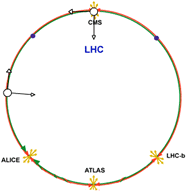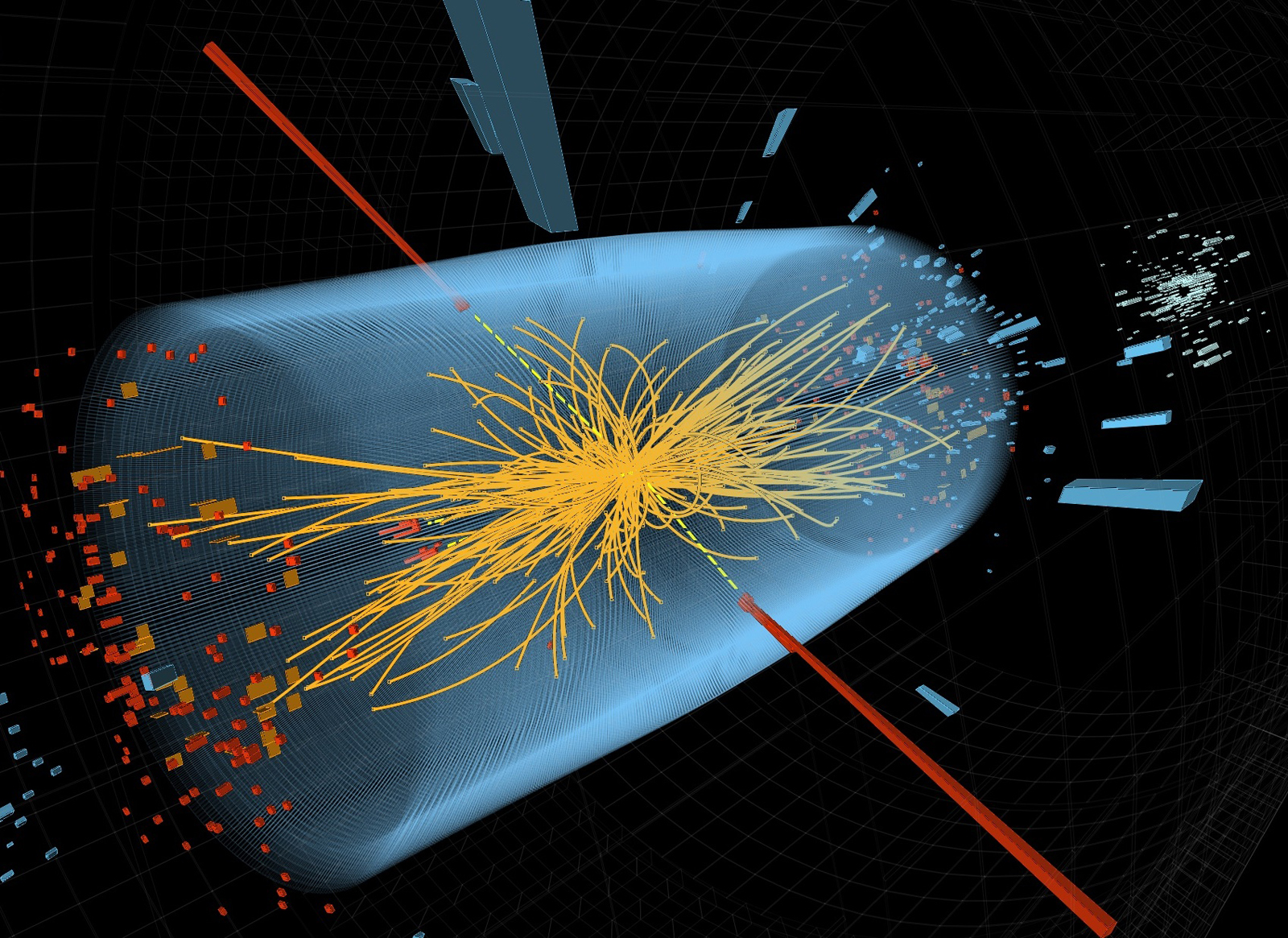Taking a closer look at LHC
CENTRIPETAL FORCE
|
The necessary force on each proton travelling at almost the speed of light will be: Con v~c : Fc = mc2/r ⇒ Fc = E/r To generate this force there are 1232 magnetic dipoles located on the eight archs, each one having a magnetic length of 14,3 m, giving a total implied length: 1232 × 14,3 = 17618 m Precisely, we can calculate the so-called "bending radius": rb =17618/(2π) ⇒ rb = 2804 m |
 |
So,
Fc = 4·10-10 N
on each proton.
A simple expression to calculate the bending radius is:

Where E is the energy of each proton in TeV and B is the value of the magnetic field of the dipoles in Tesla.
(See its deduction here)
ACTION AND REACTION
But the accelerator will suffer the same force from each proton.
Considering the two beams with 2808 bunches and the number of protons inside (1,15·1011):
FT = 2 · 2808 × 1,15·1011 × 4·10-10
So the reaction force over the curved part of the accelerator will be equivalent to 26 tonnes of force.
And the most incredible is that this force is created in interaction with 6·1014 protons with a rest mass of only 1 ng (one nanogram!).
An other more impresive force acts over the beam pipe because the superconductive currents. which is explained in Magnetic Dipoles.
The designers have taken these forcee into account because very high precision is required.
|
AUTHORS Xabier Cid Vidal, PhD in experimental Particle Physics for Santiago University (USC). Research Fellow in experimental Particle Physics at CERN from January 2013 to Decembre 2015. He was until 2022 linked to the Department of Particle Physics of the USC as a "Juan de La Cierva", "Ramon y Cajal" fellow (Spanish Postdoctoral Senior Grants), and Associate Professor. Since 2023 is Senior Lecturer in that Department.(ORCID). Ramon Cid Manzano, until his retirement in 2020 was secondary school Physics Teacher at IES de SAR (Santiago - Spain), and part-time Lecturer (Profesor Asociado) in Faculty of Education at the University of Santiago (Spain). He has a Degree in Physics and a Degree in Chemistry, and he is PhD for Santiago University (USC) (ORCID). |
CERN CERN Experimental Physics Department CERN and the Environment |
LHC |
IMPORTANT NOTICE
For the bibliography used when writing this Section please go to the References Section
© Xabier Cid Vidal & Ramon Cid - rcid@lhc-closer.es | SANTIAGO (SPAIN) |



